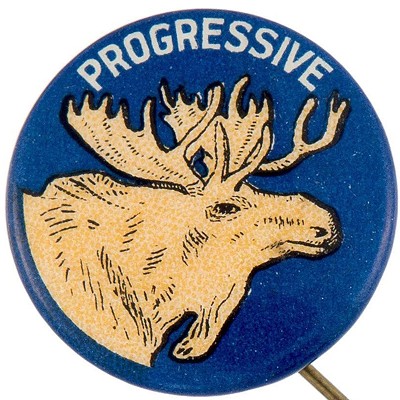by Paul K. Haeder & r & & r & & lt;span class= & quot;dropcap & quot; & E & lt;/span & ver since humans organized themselves into towns, boroughs, cities and metropolises, the farm and trades markets have been more than a means to buying fresh food and crafted goods. Such markets have always been gathering places, creating a real sense of community.
The typical farmers' market today provides fresh, local food, cooking demos, live entertainment, a venue for crafts people and artisans, and a destination for tourists and citizens.
"A city was inconceivable without a public market, and a market could not exist without the city," Helen Tangires told a crowd at the International Public Market Conference held in Washington, D.C., in October 2005. "I cannot help but think that the mutual dependence of markets and cities must remain alive, if either will survive in the long run."
In Spokane, there have been various iterations of a farmers' market, from the Farmers' Street Market of the early 1900s at Second Avenue between Washington and Stevens, to the Westlake Market (1905-1971) at the corner of Main and Post, to the Washington Market (1911-1978) to the Schade Market on Trent, and the Spokane Marketplace along the railroad east of Division.
The current location of the Spokane Farmers' Market (SFM), at Second and Division, is problematic on many levels. Last year, the SFM did around $200,000 of sales, a figure that shows that each year for the past five, the market has grown. But compared to even Olympia's market -- in a city of 47,000 -- those figures pale in comparison. The Olympia market grossed $4 million last year.
Chyrs Ostrander intimately knows the challenges for SFM's future. He has grown and sold produce in many California markets, and he's a member of many advocacy groups, including the Spokane Sustainability Agriculture Leadership Team and the Washington State Department of Agriculture's Small Farm and Direct Marketing Program Advisory Board.
"When done correctly, open markets can be instrumental in providing a sense of community," Ostrander says. He founded Chrysalis Farm in 1991, an organic farm on the Tolstoy Farm Land Trust. "Also, it is important to support local growers through these open markets. Farming is an important part of our region, and without markets, growers couldn't survive selling only wholesale to private groceries."
Deep Roots & r & In the early 1700s, there were more than 800 farmers' markets in England. In the developing United States, combination town halls/markets, using diverse architectural styles, were centerpieces in cities from Rhode Island to South Carolina.
Nine of the 20 Founding Fathers were farmers. Forty percent of Americans were employed in farming in 1910, compared to less than 2 percent today. In the early 1800s, more than 90 percent of Americans lived on farms; today, less than one percent lives on farms. The number of people those early farms fed was three to five; now, more than 130 people are fed from each farm. With many farmers quitting and selling off, the size of today's farms are huge, with more than 20 percent of farms at more than 500 acres each.
However, there are some countervailing forces pushing people to engage in small farming. Small farms are increasing at a rate of two percent a year, according to the Department of Agriculture.
Another sort of impetus is helping small farming operations: Community Supported Agriculture (CSA) farms, like Tolstoy, which depends on Spokane area residents to buy stock in the nearby farm. It's a partnership that requires some risk taking in terms of the success of harvests. According to the Rodale Institute, the number of CSA farms nationwide jumped from 1,000 in 1999 to more than 2,000 in 2004. In 1994, there were 1,755 markets nationwide. By the end of 2004 that number grew to more than 3,700. Markets are economic development tools. Governments, chambers of commerce and downtown development authorities have pushed for farmers' markets as destination centers.
"There's a trend toward smaller farms growing very high-value crops and being highly diversified," says Steve Evans, who is King County's "farmbudsman," a position defined as assisting the area's agriculture entrepreneurs.
The power of locally grown organic foods goes beyond nutrition and environmental stewardship. Whereas in the past a farmer was lucky to make $2,000 in profit per acre, now the small, diverse organic farmer could make up to $25,000 an acre.
But for now at least, people aren't making much by selling their produce in Spokane.
Staying Put & r & "There have been 15 location changes in the past 20 years," says Ostrander, who's been connected to markets in Spokane for more than two decades.
Off ramp work on 1-90 this coming summer will wreak havoc with the Farmers' Market at the 212 S. Division location, in the First Covenant Church Parking lot, says Eli Penberthy, the recently named coordinator of the Friends of the Spokane Farmers' Market. The donated parking lot of the Lutheran Church has other confounding problems.
"There's no room to grow," Penberthy says. "Customers will come despite the traffic issues," but farmers like Ostrander and Jeff Herman of Cliffside Orchards worry about the negative impact of continuing challenges that have popped up since 1999, when the Market moved to the church.
Penberthy's job is to facilitate a permanent move that will turn the crammed-in, pavement-lined and parking-space challenged market into a public space with the better amenities.
"Currently, we don't have a market that can sustain this sense of conviviality," Penberthy says. "Our market lacks green space, space to sit, usable amenities, sufficient parking, and it's crowded, noisy and hot."
Innovators Wanted & r & The power of place is on the minds of developers and redevelopers like the Phoenix Project's Chris Kelley, who envisions WSU-Spokane getting in line with other preservation-minded folk like the Community Building's owner Larry Sheehan, who is also gutting and redeveloping the adjoining Saranac Building, both within yodeling distance of the Jensen-Byrd building.
"I don't think WSU is going to tear it down," Kelley recently told the Spokane Sustainable Agriculture Leadership Team (SSALT), of which both Penberthy and Ostrander are members.
The Phoenix Project came up short during WSU's leasing process for the building; Spokane-based Northwest Architectural Consultants was the final choice for developing the space near the Riverpoint campus.
Kelley still holds out hope that Phoenix Project can have some input into the six-story building's fate -- perhaps as a redeveloped, retrofitted future Pike's Place-like market, with a whole load of other tenants thrown in.
The ground floor is two acres, and outside there is ample space and parking for both a farmers' market and the building's other tenants. Kelley sounds euphoric when listing all the possibilities for the Jensen-Byrd building: year-round markets; art theater; sound stage; writers' grotto; day care center; KPBX possibly setting down roots.
Kelley's presentation to SSALT, whose main mission is to support farmers and agriculture through a viable farmers' market, is part of Penberthy's multi-pronged approach to getting the ball rolling.
"The first and most crucial phase is finding a location where we can set up an outdoor market and have a commitment from the owners of the land that we will be able to use it long-term," Penberthy says. "The second phase is organizing enough stakeholders -- the city, businesses, developers and consumers -- to work toward developing a permanent structure."
Penberthy envisions permanent shelters, sitting spaces, an area for kids to play and a kitchen for cooking demonstrations as logical amenities.
"Given the climate and farmable land in the region, our market should be grossing millions," she says. "The farmers simply want a nice place to sell their food, but the community needs a civic center that serves a larger purpose."
The Spokane Farmers' Market opens on Saturday, May 13, at First Covenant Church, 212 S. Division. A spelt pancake feed starts around 9:30 am.
Growing Market Share
[
{
"name": "Broadstreet - Instory",
"component": "25846487",
"insertPoint": "4",
"requiredCountToDisplay": "4"
},{
"name": "Broadstreet - Empower Local",
"component": "27852456",
"insertPoint": "8",
"requiredCountToDisplay": "8"
},{
"name": "Broadstreet - Instory",
"component": "25846487",
"insertPoint": "12",
"requiredCountToDisplay": "12"
},{
"name": "Broadstreet - Instory - 728x90 / 970x250",
"component": "27852677",
"insertPoint": "18",
"requiredCountToDisplay": "18"
},{
"name": "Broadstreet - Instory",
"component": "25846487",
"insertPoint": "5th",
"startingPoint": "23",
"requiredCountToDisplay": "24",
"maxInsertions": 100
}
]















